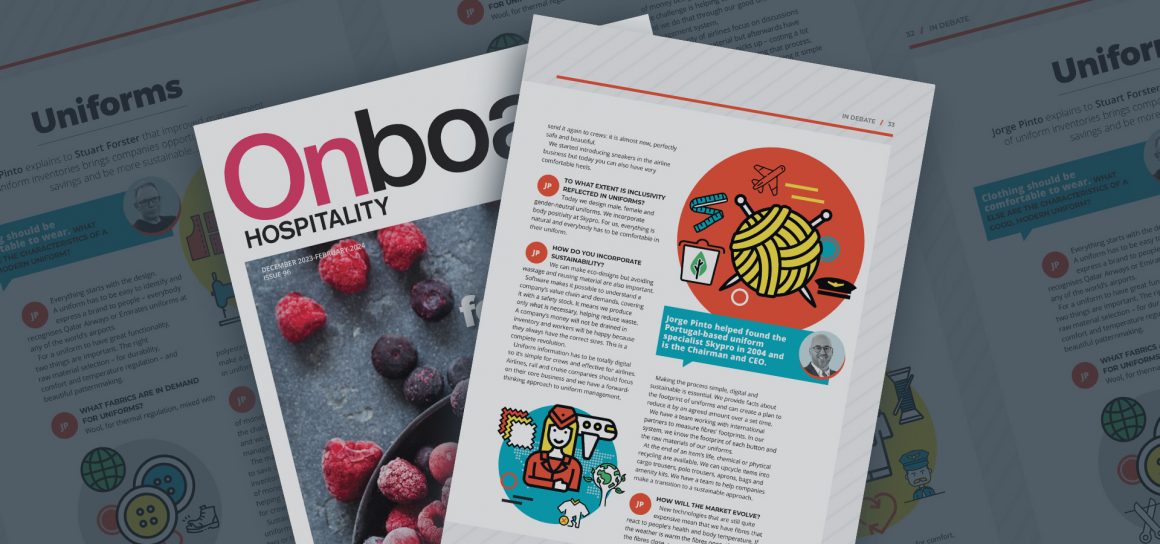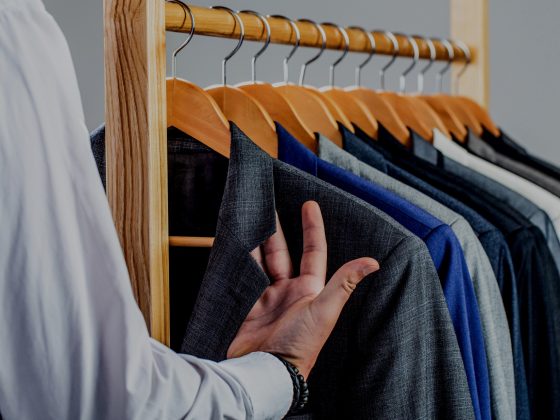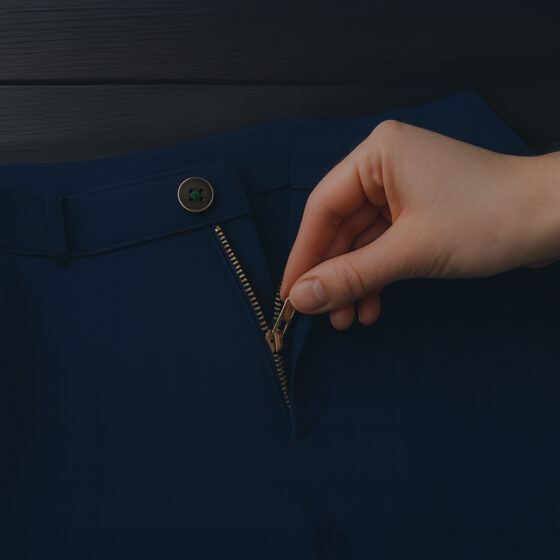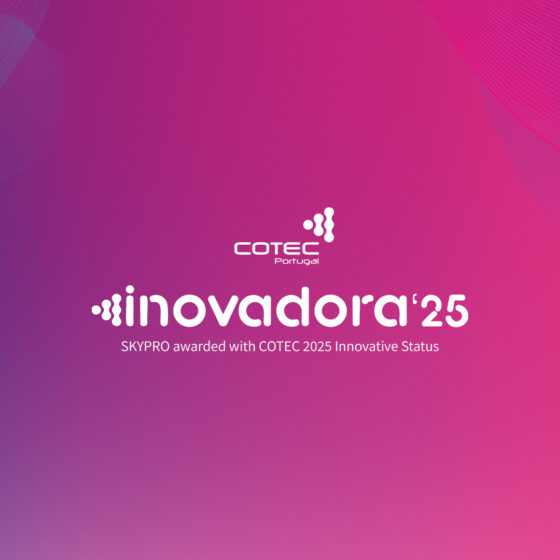In interview to Stuart Forster, SKYPRO’s CEO, Jorge Pinto, explains how improved management of Uniform inventories can bring opportunities to make savings and be more sustainable.
See the original version of the interview on pages 32 and 33 of the online version of Onboard Hospitality Magazine
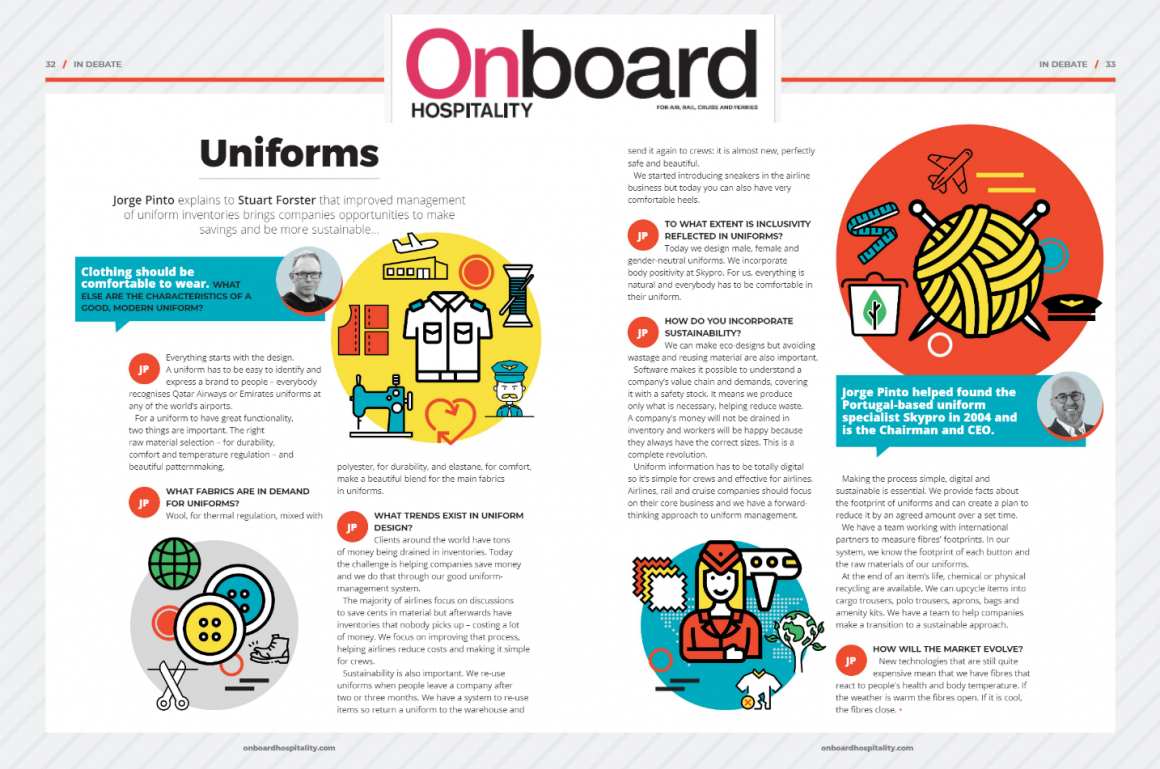
OBH: Clothing should be comfortable to wear. What else are the characteristics of a good, modern uniform?
Jorge Pinto: Everything starts with the design. A uniform has to be easy to identify and express a brand to people – everybody recognises Qatar Airways or Emirates uniforms at any of the world’s airports. For a uniform to have great functionality, two things are important. The right raw material selection – for durability, comfort and temperature regulation – and beautiful patternmaking.
OBH: What fabrics are in demand for uniforms?
Jorge Pinto: Wool, for thermal regulation, mixed with polyester, for durability, and elastane, for comfort, make a beautiful blend for the main fabrics in uniforms.
OBH: What trends exist In Uniform Design?
Jorge Pinto: Clients around the world have tons of money being drained in inventories. Today the challenge is helping companies save money and we do that through our good uniformmanagement system.
The majority of airlines focus on discussions to save cents in material but afterwards have inventories that nobody picks up – costing a lot of money. We focus on improving that process, helping airlines reduce costs and making it simple for crews.
Sustainability is also important. We re-use uniforms when people leave a company after two or three months. We have a system to re-use items so return a uniform to the warehouse and send it again to crews: it is almost new, perfectly safe and beautiful.
We started introducing sneakers in the airline business but today you can also have very comfortable heels.
OBH: To what extent is inclusivity reflected In Uniforms?
Jorge Pinto: Today we design male, female and gender-neutral uniforms. We incorporate body positivity at Skypro. For us, everything is natural and everybody has to be comfortable in their uniform.
OBH: How do you incorporate Sustainability?
Jorge Pinto: We can make eco-designs but avoiding wastage and reusing material are also important. Software makes it possible to understand a company’s value chain and demands, covering it with a safety stock.
It means we produce only what is necessary, helping reduce waste. A company’s money will not be drained in inventory and workers will be happy because they always have the correct sizes.
This is a complete revolution. Uniform information has to be totally digital so it’s simple for crews and effective for airlines.
Airlines, rail and cruise companies should focus on their core business and we have a forwardthinking approach to uniform management, making the process simple, digital and sustainable is essential.
We provide facts about the footprint of uniforms and can create a plan to reduce it by an agreed amount over a set time. We have a team working with international partners to measure fibres’ footprints.
In our system, we know the footprint of each button and the raw materials of our uniforms. At the end of an item’s life, chemical or physical recycling are available. We can upcycle items into cargo trousers, polo trousers, aprons, bags and amenity kits.
We have a team to help companies make a transition to a sustainable approach.
OBH: How will the market evolve?
Jorge Pinto: New technologies that are still quite expensive mean that we have fibres that react to people’s health and body temperature. If the weather is warm the fibres open. If it is cool, the fibres close. •
The time has come for your company to upgrade to SKYPRO Uniforms.
Contact us today!
SKYPRO
Global. Tech. Eco. Human.
Offices: Lisbon | Dubai | Atlanta
corporate.wearskypro.com
